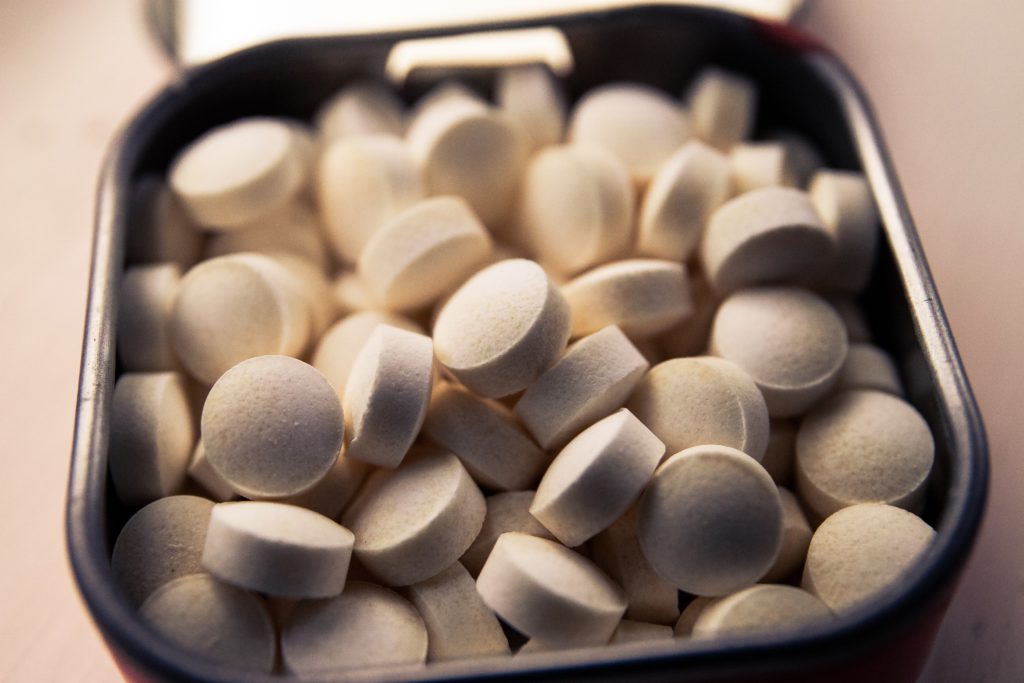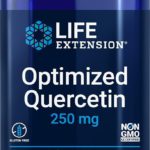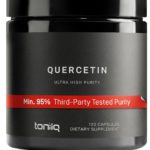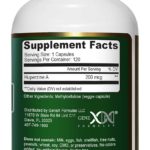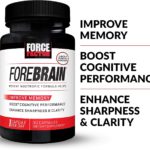Curious about the supplement PEA and its uses? Palmitoylethanolamide (PEA) is a naturally occurring fatty acid amide that has gained attention for its potential therapeutic properties. It is synthesized in various tissues of the body and is thought to play a role in modulating the immune response and promoting homeostasis. While not classified as a traditional pharmaceutical drug, PEA is often referred to as a nutraceutical or dietary supplement and is believed to have health benefits, particularly in managing chronic pain and inflammation. So, if you’re interested in learning more about what the supplement PEA is used for, read on!
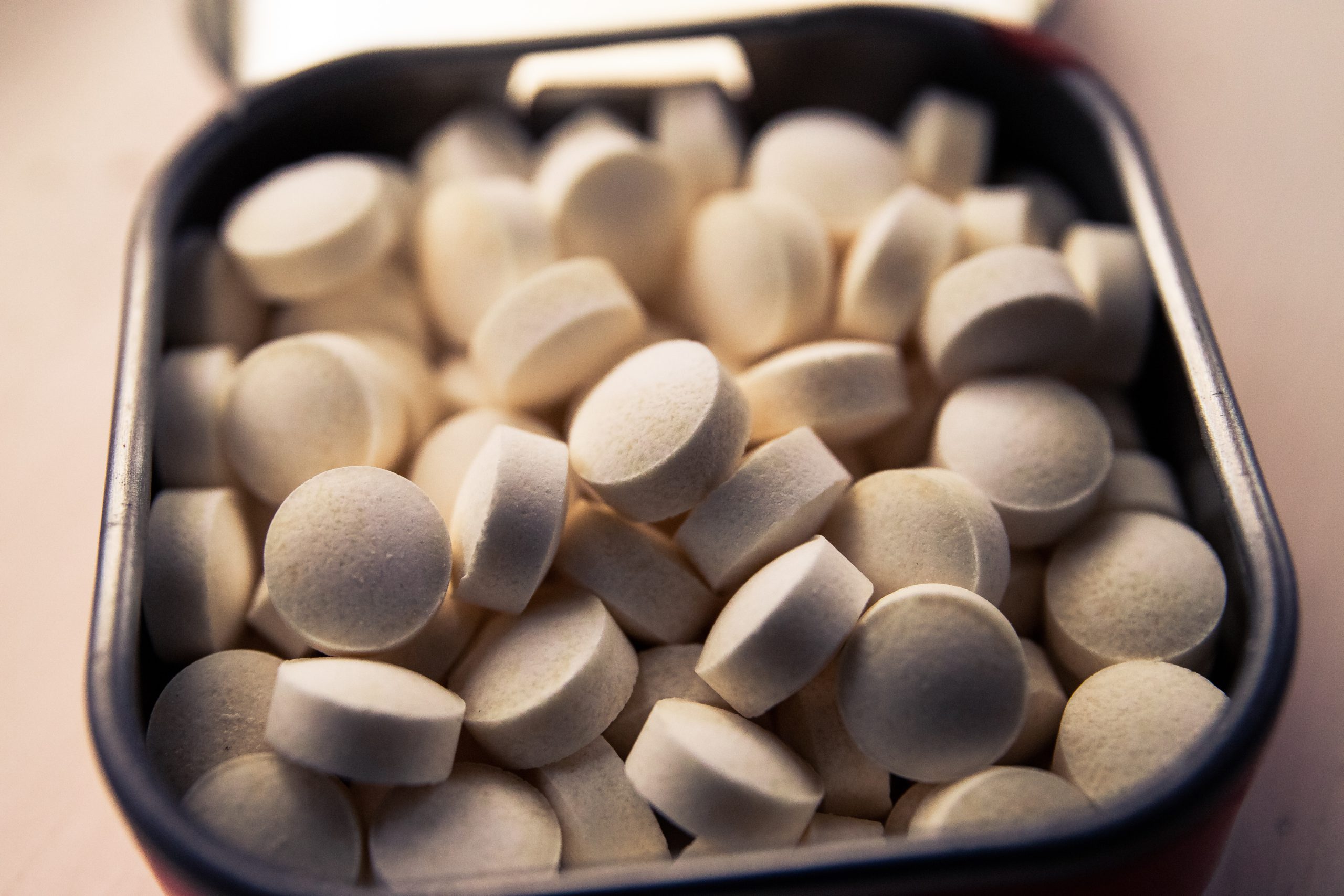
Overview of PEA
Palmitoylethanolamide (PEA) is a naturally occurring fatty acid amide that belongs to the family of endocannabinoids. It was first isolated from soybean lecithin in the 1950s and has since gained attention for its potential therapeutic properties. PEA is synthesized in various tissues of the body, especially in response to inflammation and pain, and is thought to play a role in modulating the immune response and promoting homeostasis.
PEA is often referred to as a “nutraceutical” or a “dietary supplement” due to its status as a naturally occurring compound. It is not considered a traditional pharmaceutical drug, but rather a compound that might have health benefits, especially in the context of managing chronic pain and inflammation.
History of PEA
The discovery of PEA dates back to the 1950s when it was first isolated from soybean lecithin. However, its therapeutic properties and effects in the body were not well understood until decades later. Researchers began to explore the potential of PEA in the field of pain management and inflammation reduction, leading to further studies on its synthesis and functions.
Over the years, PEA has gained recognition for its role as an endocannabinoid, a compound that interacts with the body’s endocannabinoid system to help regulate various physiological processes. Its history of research and development has paved the way for its use as a supplement for various health conditions.
Synthesis and Functions of PEA
PEA is synthesized in various tissues of the body, such as immune cells, nerve cells, and glial cells. Its synthesis is often triggered in response to inflammation, pain, or other stimuli. PEA acts as a lipid mediator, which means it helps regulate and maintain balance in the body.
One of the main functions of PEA is to modulate the immune response. It works by interacting with receptors in the immune system, helping to regulate the activity of immune cells and reducing excessive inflammation. PEA also plays a role in promoting homeostasis, which refers to the body’s ability to maintain a stable internal environment despite external changes.
PEA as an Endocannabinoid
PEA is classified as an endocannabinoid due to its ability to interact with the body’s endocannabinoid system. This system consists of receptors, enzymes, and endocannabinoids that work together to regulate various physiological processes, including pain, mood, appetite, and immune function.
When PEA binds to cannabinoid receptors, particularly the CB1 and CB2 receptors, it can exert its effects on pain perception, inflammation, and other functions. By acting as an endocannabinoid, PEA helps maintain balance and promote overall well-being in the body.

Health Benefits of PEA
PEA has been studied extensively for its potential health benefits. Research has shown that it may offer therapeutic effects in various areas, including pain management, inflammation reduction, neuroprotection, mood enhancement, immune modulation, and promotion of homeostasis.
Pain Management
One of the key benefits of PEA is its ability to manage pain. PEA has been shown to interact with receptors involved in pain signaling, thereby reducing pain perception. It may be especially effective in chronic pain conditions, such as neuropathic pain and fibromyalgia. By modulating pain pathways, PEA can provide relief and improve quality of life for individuals experiencing persistent pain.
Inflammation Reduction
PEA possesses anti-inflammatory properties, which make it a valuable tool in managing inflammation-related conditions. It works by reducing the production of pro-inflammatory molecules and inhibiting the activation of immune cells involved in inflammation. PEA’s anti-inflammatory effects have been studied in various inflammatory disorders, including arthritis, colitis, and dermatitis.
Neuroprotective Effects
Research suggests that PEA has neuroprotective potential, meaning it can protect nerve cells from damage and degeneration. It may help prevent or slow down the progression of neurodegenerative diseases, such as Alzheimer’s and Parkinson’s. PEA’s neuroprotective effects are believed to be mediated by its antioxidant and anti-inflammatory properties, as well as its ability to promote cellular homeostasis.
Mood Enhancement
PEA has been found to affect mood and emotions by interacting with the neurotransmitter serotonin. Serotonin is known as the “feel-good” neurotransmitter, and imbalances in serotonin levels have been linked to mood disorders such as depression. By enhancing serotonin activity, PEA may have antidepressant effects and help improve mood.
Immune Modulation
PEA modulates the immune response by regulating the activity of immune cells and reducing excessive inflammation. It acts as an immunomodulator, helping to restore balance in the immune system. This immune-modulating property of PEA has been studied in autoimmune disorders, such as multiple sclerosis and rheumatoid arthritis, where excessive immune activity leads to tissue damage.
Homeostasis Promotion
PEA plays a role in maintaining homeostasis, which is crucial for the proper functioning of the body. By promoting balance and stability, PEA contributes to overall well-being. It helps regulate various physiological processes, including metabolism, sleep-wake cycles, and stress response. By supporting homeostasis, PEA may contribute to improved health and vitality.
PEA and Chronic Pain
Chronic pain is a complex condition that can greatly impact quality of life. PEA has shown promise in managing chronic pain, including neuropathic pain, which is caused by damage or dysfunction of the nerves. Its mechanism of action involves interacting with receptors involved in pain signaling and reducing pain perception.
Mechanism of Action
PEA’s mechanism of action in pain management is not fully understood, but it is thought to involve several pathways. It is believed to exert its effects by activating the peroxisome proliferator-activated receptor alpha (PPAR-α), which plays a role in reducing pain transmission and inflammation. PEA may also modulate the release of neurotransmitters involved in pain modulation, such as glutamate and Substance P.
Clinical Studies on PEA
Several clinical studies have been conducted to evaluate the efficacy of PEA in managing chronic pain. These studies have shown promising results, suggesting that PEA can provide significant pain relief. For example, a study on patients with sciatica, a type of nerve pain, found that treatment with PEA resulted in reduced pain intensity and improved functional outcomes.
PEA as an Analgesic
PEA’s ability to reduce pain has led to its use as an analgesic, a substance that provides pain relief. Unlike traditional analgesics, such as opioids, PEA does not carry the risk of addiction or tolerance development. It offers a more natural and potentially safer alternative for individuals seeking pain relief without the side effects associated with conventional medications.
PEA and Inflammation
Inflammation is a natural immune response that helps the body fight infection and heal injuries. However, chronic or excessive inflammation can contribute to the development of various diseases. PEA has been studied for its anti-inflammatory effects and its potential as a therapeutic agent for inflammatory conditions.
Anti-inflammatory Effects of PEA
PEA exhibits anti-inflammatory effects by inhibiting the production of pro-inflammatory molecules, such as cytokines and chemokines. It also reduces the activation of immune cells involved in inflammation, such as mast cells and macrophages. PEA’s anti-inflammatory properties have been studied in conditions such as arthritis, colitis, and dermatitis.
PEA in Inflammatory Conditions
Given its anti-inflammatory effects, PEA has been investigated as a potential treatment for inflammatory conditions. Research suggests that PEA can help alleviate symptoms and reduce inflammation in various disorders. For example, studies have shown that PEA supplementation can improve symptoms and reduce inflammation in patients with irritable bowel syndrome (IBS) and carpal tunnel syndrome.
PEA as a Therapeutic Agent
The anti-inflammatory properties of PEA make it a promising therapeutic agent for various inflammatory conditions. Its ability to reduce inflammation and modulate the immune response can help alleviate symptoms and potentially slow down disease progression. PEA offers a natural approach to managing inflammation without the side effects associated with traditional anti-inflammatory medications.
PEA and Neuroprotection
Neuroprotection refers to the preservation and protection of nerve cells from damage and degeneration. PEA has shown potential as a neuroprotective agent, making it a subject of interest in the field of neurodegenerative diseases.
Neuroprotective Potential of PEA
PEA’s neuroprotective effects are believed to be mediated by multiple mechanisms. It exhibits antioxidant properties, which help neutralize harmful free radicals and reduce oxidative stress in the brain. PEA also has anti-inflammatory effects, which can help reduce inflammation-driven nerve damage. Additionally, it promotes cellular homeostasis, supporting the overall health and function of nerve cells.
PEA and Neurodegenerative Diseases
Neurodegenerative diseases, such as Alzheimer’s and Parkinson’s, involve the progressive degeneration of nerve cells in the brain. These conditions result in cognitive decline, motor symptoms, and various neurological impairments. PEA’s neuroprotective potential has sparked interest in its use as a preventative or therapeutic agent for neurodegenerative diseases. While more research is needed, preliminary studies have shown promising results.
PEA as a Neuroprotective Agent
PEA’s ability to protect nerve cells from damage and degeneration makes it a potential neuroprotective agent. It may help slow down disease progression, preserve cognitive function, and improve neurological outcomes. While PEA is not a cure for neurodegenerative diseases, it offers a natural and potentially beneficial approach to support brain health and potentially delay the onset of symptoms.
PEA and Mood Enhancement
PEA has been shown to influence mood and emotions, making it a subject of interest in the field of mental health. It interacts with the neurotransmitter serotonin, which plays a crucial role in mood regulation.
PEA and Serotonin
Serotonin is often referred to as the “feel-good” neurotransmitter due to its role in promoting positive mood and well-being. Imbalances in serotonin levels have been linked to mood disorders such as depression. PEA has been found to enhance the activity of serotonin by preventing its reuptake, thereby increasing serotonin levels in the brain. This serotonin-enhancing effect may contribute to its mood-enhancing properties.
Role of PEA in Depression
Depression is a complex mood disorder characterized by persistent sadness, loss of interest, and other symptoms that significantly affect daily life. PEA’s ability to enhance serotonin activity has led to its investigation as a potential treatment for depression. Studies have shown that PEA supplementation can improve depressive symptoms and enhance overall well-being in individuals with depression.
PEA as an Antidepressant
While PEA is not a standalone treatment for depression, it may offer benefits as an adjunct therapy or as a natural alternative to traditional antidepressant medications. Its mood-enhancing effects, coupled with its safety profile, make it an appealing option for individuals seeking natural support for their mental health. PEA supplementation may help improve mood, reduce symptoms of depression, and contribute to overall emotional well-being.
PEA and Immune Modulation
PEA has been found to modulate the immune response, helping to restore balance and regulate immune function. This has implications for various immune-related disorders, including autoimmune diseases.
Modulatory Effects of PEA on Immune Response
PEA interacts with receptors in the immune system, such as the peroxisome proliferator-activated receptor alpha (PPAR-α), to modulate immune activity. It helps regulate the activity of immune cells, such as T cells and macrophages, reducing excessive inflammation and promoting immune balance. By modulating the immune response, PEA contributes to overall immune health and may help alleviate symptoms associated with immune-related disorders.
PEA in Autoimmune Disorders
Autoimmune disorders occur when the immune system mistakenly attacks healthy tissues in the body, leading to chronic inflammation and tissue damage. PEA’s ability to modulate immune function makes it a potential therapeutic agent for autoimmune diseases. Research has shown that PEA can reduce inflammation and improve symptoms in various autoimmune conditions, including multiple sclerosis, rheumatoid arthritis, and lupus.
Potential of PEA in Immune Therapy
The immune-modulating properties of PEA make it a promising candidate for immune therapy. By restoring immune balance and reducing excessive inflammation, PEA may help alleviate symptoms and improve outcomes in immune-related disorders. Its natural origin and safety profile further enhance its appeal as a potential immunomodulatory therapy.
PEA and Homeostasis
Homeostasis refers to the body’s ability to maintain a stable internal environment despite external changes. PEA plays a role in maintaining homeostasis by modulating various physiological processes.
Role of PEA in Maintaining Homeostasis
PEA helps maintain homeostasis by interacting with various systems in the body, including the endocannabinoid system and the immune system. It regulates processes such as metabolism, sleep-wake cycles, stress response, and inflammation, ensuring that they remain within optimal ranges. By supporting homeostasis, PEA contributes to overall well-being and helps the body function optimally.
PEA in Metabolic Disorders
Metabolic disorders, such as obesity and diabetes, involve disruptions in metabolic processes, such as energy balance and glucose regulation. PEA’s role in maintaining homeostasis extends to metabolic regulation. Research suggests that PEA can help regulate energy expenditure, improve insulin sensitivity, and reduce inflammation associated with metabolic disorders. It offers a potential natural approach to managing metabolic health and supporting weight management.
PEA for Overall Well-being
PEA’s impact on various physiological processes and its role in maintaining homeostasis contribute to overall well-being. By supporting the body’s natural balance and stability, PEA helps individuals feel their best physically, mentally, and emotionally. Its potential benefits in pain management, inflammation reduction, mood enhancement, immune modulation, and metabolic regulation make it a promising supplement for promoting overall health and vitality.
Forms and Dosage of PEA
PEA is available in various forms, including oral capsules, topical creams, and powders. The most common form is oral capsules, which provide a convenient and standardized way to supplement with PEA. Topical creams containing PEA are often used for localized pain relief. The dosage of PEA may vary depending on the individual and the specific health condition. It is best to consult with a healthcare professional for personalized dosing recommendations.
PEA Supplements
PEA supplements are widely available and can be purchased over the counter. They are typically labeled as palmitoylethanolamide and can be found in health food stores, online retailers, and pharmacies. It is important to choose a reputable brand that ensures quality and purity. Look for supplements that have undergone third-party testing and adhere to good manufacturing practices (GMP) to ensure safety and efficacy.
Recommended Dosage
The recommended dosage of PEA may vary depending on the purpose of supplementation and individual needs. In general, a starting dosage of 300-600 mg per day is commonly recommended for pain management. Higher dosages may be necessary for individuals with more severe symptoms or specific health conditions. It is advisable to start with a lower dosage and gradually increase as needed, under the guidance of a healthcare professional.
Safety and Side Effects of PEA
PEA is generally well-tolerated and considered safe for most individuals. It is a naturally occurring compound that is produced by the body. As a supplement, it has a good safety profile, and adverse effects are rare.
Tolerability of PEA
PEA has been extensively studied for its safety and tolerability. Clinical trials and observational studies have shown that PEA is well-tolerated, with few reported side effects. It is considered a safe option for individuals seeking natural support for various health conditions.
Potential Side Effects
While side effects are rare, some individuals may experience minor gastrointestinal symptoms, such as nausea, upset stomach, or diarrhea. These side effects are generally mild and transient, resolving on their own without intervention. If any side effects persist or worsen, it is advisable to consult with a healthcare professional.
Interactions with Other Medications
PEA is generally safe to use alongside other medications. However, it is always important to inform your healthcare provider about any supplements or medications you are taking to ensure there are no potential interactions. PEA has been studied in combination with various medications, including painkillers and antidepressants, without significant adverse effects. Nonetheless, consulting with a healthcare professional is recommended to ensure safety and efficacy.
In conclusion, Palmitoylethanolamide (PEA) is a naturally occurring compound with a wide range of potential health benefits. It offers a natural and potentially safer alternative to conventional medications for managing chronic pain, reducing inflammation, promoting neuroprotection, enhancing mood, modulating the immune response, and supporting overall homeostasis. PEA’s role as an endocannabinoid and its ability to interact with various systems in the body contribute to its diverse therapeutic effects. While further research is needed to fully understand the mechanisms and potential of PEA, the existing studies provide promising evidence for its use as a dietary supplement. As with any supplement, it is advisable to consult with a healthcare professional before starting PEA or any other new supplement.
